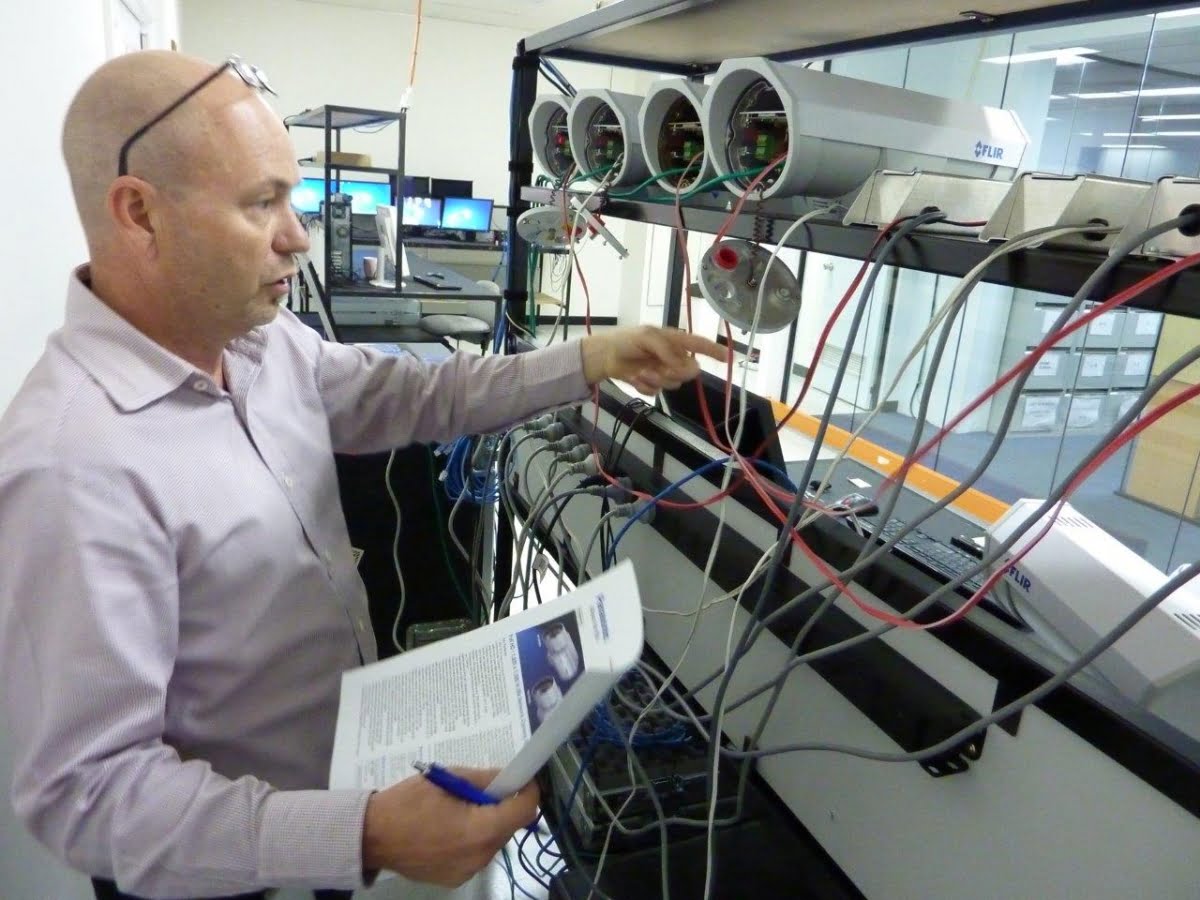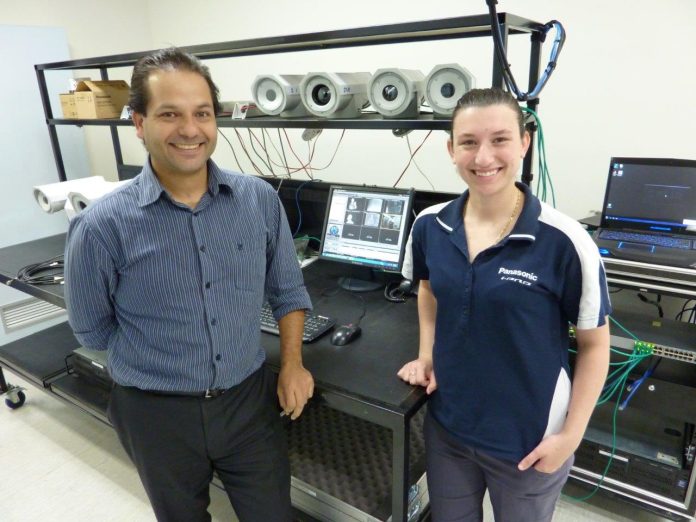Being an electronic security distributor is not what it used to be. To assist integrators with complex IT-based solutions, suppliers need to offer after-sales technical support, training and in some cases, a full commissioning service.
LAST month we heard from integrators straight talking about the sort of service and support they wanted from distributors and this month we’re going to take a look at the Pacific Communications’ commissioning service, which centres around a purpose-built staging room at Rydalmere in Sydney.
Before we launch into this it’s worth talking about the changing nature of the electronic and networked security industry. It’s true that you can still buy a DVR and a bunch of analogue surveillance cameras and build a simple, robust surveillance solution for smaller applications. But such a system will be inflexible in multiple ways and its image quality will be comparatively poor.
Analogue is old tech. End users and all consumers, including all of us, conduct business in networked environments. We all leverage the flexibility and the functionality of IP solutions. Given this, there’s an expectation that electronic security solutions will have an IP backbone, will meet 1080p consumer HD standards and will be compatible with the ubiquitous hardware and software solutions most of us drive every day.
Yes, we’re hearing more about simple plug-and-play, cloud-based surveillance solutions and are seeing some manufacturers moving towards that space but there are limitations to cloud-based CCTV technology at this time. Issues like bandwidth and variable network quality can pinch frame rates and/or resolution, and real time monitoring of multiple cameras across public networks at HD is challenging to say the least.
I’d go as far as to say all but the simplest cloud CCTV applications defeat the entire purpose of 30ips, 1080p HD imagery. And given the fact a single quality camera is throwing 4Mbps at a network, it’s impossible to imagine upload bandwidth capable of supporting multiple cameras in real time being installed in Australia any time soon.
Serious commercial, industrial and government CCTV solutions need high quality, dependable components, as well as rock solid support starting with a sale and continuing throughout the life of a product and its subsequent iterations. Serious users need hardware to be local so as to access the full performance of dozens, hundreds or even thousands of 1080p HD cameras driving in real time to monitoring rooms and storage bins.
As a result, most large solutions run on dedicated subnets with a switch between themselves and data networks ensuring only a handful of authorised workstations can view camera footage. These full digital solutions are powerful, flexible, future-proof and open to significant lateral integration. However, networked security solutions can also be very complicated.
The idea of wrangling the network setup of 50 IP cameras, network area storage, a couple of work stations, remote access to a server, as well as PoE and data-side network switcher and workstation config, can be too much for many small/medium installers. At the same time, installers and integrators who resist doing any IP work are shutting themselves out of the surveillance market’s most profitable sector, as well as divorcing themselves from the future.
There’s a solution to this dilemma and it’s partnering with a distributor that offers a full commissioning service to its customers. In the case of Pacific Communications, the team is actively involved in supporting integrators from planning to commissioning. According to Pacific Communications state manager, Scott Myles, his team calls this process ‘from conception to delivery’ and it kicks off with a pre-stage meeting.
“Present at the pre-stage meeting are our account manager, our service people and the integrator,” Myles explains. “This is where we start getting all the data we need. Details include name, address, contact details, integrator, certifications, when the work is booked in, the quote, the storage calculations, system network diagram, camera recording schedule, wireless or hardwired, the bandwidth calculation, solar or mains and all the rest.
“Gathering data is a vital part of building our staging documentation – we use it for large video surveillance solutions including DVTel, Pelco Digital Sentry, Panasonic VMS, Endura and MPNVR. System diagrams are very detailed. We go through the design with the integrator and make notes right down to the last device,” he says. “After this process is complete, end users and integrators come in and go through system drawings to make sure everything meets agreed requirements.”
The beauty of this detailed documentation is that is means all aspects of a system are known, there are no mysteries and that makes the process stronger and faster, as well as facilitating faster maintenance if required. According to Myles, integrators retain full control throughout the process. For instance, in the pre-staging meeting they decide what the naming convention is for servers, workstations and cameras, they decide what the IP address range is and the commissioning team set the system up.
“Next, we look at when we are going to start with the staging so the integrator and the end user know exactly when and how the process is going to take place,” Myles explains. “We order all the equipment in, which might take a couple of weeks, then set a date in the commissioning team’s service diaries for work to commence.
“What this means is that the day the gear arrives and gets pulled through the double doors into the staging room, the staging team is waiting and swings into action to prepare the equipment for installation. Once the commissioning process is complete and all the devices, hardware components and software components have been set up, we ask the integrator when they want to come in for the factory acceptance test and sign off. At this time, integrators generally get a bit of training on the equipment.
“After this, there’s the on-site support commissioning date. So we need to establish with the integrator when we are actually required on site.
Then there’s a date the end user might want us to come to site for training. Then there’s the handover date.”
According to Myles, all the information on the commissioning directory is captured and recorded electronically and signed off for QA purposes.
“This allows us to self manage our work,” he says. “It’s the same for archivers, operating viewing platforms (workstations), switch information, camera and encoder information – in fact, all the settings. We keep a copy and we make 2 manuals, one for integrator and one for end user – and these manuals incorporate all the details of every aspect of a system.”
“The staging is a service we charge for. But given our thoroughness and skill, it’s extremely good value. Someone has to be handling this process, whether it’s us as a supplier, or the integrator, whose team may not be familiar with much of the equipment”
If you think commissioning multiple sites simultaneously sounds challenging, you’re right. Making sure everything works as it should is the Pacific Communications’ commissioning team, which utilises an interactive spreadsheet of all Pacific Communications’ sites, colour coded so it’s possible to see at a glance the state of each. This is an interesting aspect of the Pacom business. Every site in which the company has undertaken a project is included in this spreadsheet so the whole Pacom team knows if there’s a problem.
“On the spread sheet a red colour means means we are working on an issue, if it’s yellow there’s a slight issue being resolved, while green means the system is working as it should,” Myles explains. “Every sales meeting we go through our site list and make sure that anything red is being addressed.
“The staging is a service we charge for,” says Myles. “But given our thoroughness and skill, it’s extremely good value. Someone has to be handling this process, whether it’s us as a supplier, or the integrator, whose team may not be familiar with much of the equipment.
“We have the facilities and the expertise and we believe that in many cases it’s best for us to manage commissioning in-house rather than assist an integrator over the phone and possibly have the gear not perform as it should do. The quote is up front, too, so you know what cost will be and we don’t charge extra for overtime, either.”

Pacom's NSW state manager, Scott Myles
Next we take a walk into staging room. It’s a big, clean dedicated space that’s well laid-out with staging tables complete with integrated trays and a deep shelf to support cameras during the process of commissioning. Interestingly, there are no server racks, with servers commissioned on the bench top or in trays and then racked on site. When I visit, a bunch of big Flir cameras are being commissioned for a major federal government department and the team is hard at work.
There’s a set of double swing doors that lead through to the warehouse so pallets of gear can easily be whisked into the commissioning room and the team can get straight to work on the staging tables. The staging tables are interesting in that they have castors on them so they can be walked around the room, pulled out of the way, rolled over to test equipment, or pushed out of the way against a wall, depending on the process being undertaken.
So – every single component, all the systems relating to an installation, they’re all powered up and integrated and they leave this room virtually plug and play, ready to be installed? I ask.
“Yes, that’s right and that includes the head end – even if an integrator doesn’t buy the head end from us,” Myles explains. “If they send us the servers and the workstations, we’ll still commission it all for them.
“When it’s all sorted out, every component is labelled so the system can be reassembled with the minimum effort by installers in the field. Everything is labelled, so this switch is for node 1, this switch is for node 2, these cameras are for node 3, etc.
“It’s done in a controlled environment with full documentation and it works well,” Myles says. “If there are problems when a system goes to site, we can go through our documentation and pinpoint any issues. This reduces the time it takes to resolve issues because we’ve done all the work in advance.”
Though some distributors offer commissioning service, no one’s got anything like this quite like this that I’ve seen, I say.
“No, no one is doing it quite like this, though I think they will need to in the future,” explains Myles. “We are always trying to think of how we can be different. We are not just a box mover. If you want to buy a box, you can buy one but as far as creating a complicated electronic security solution in partnership with an integrator and an end user, that’s something else again.
“We are taking ownership of our customer’s solutions and working with them to support their clients,” he says. “Some integrators don’t need this level of support but for many smaller outfits it makes a lot of sense. If you’re not doing major project after major project it’s a huge investment to have such a capability – you are better off to have us do that work for
you.”








